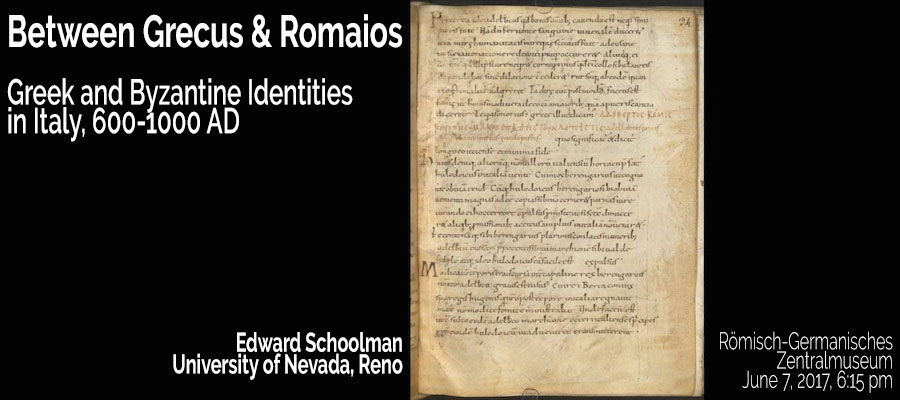Between Grecus and Romaios: Greek and Byzantine Identities in Italy, 600-1000 AD, lecture by Edward Schoolman (University of Nevada, Reno), RGZM | Römisch-Germanisches Zentralmuseum, June 7, 2017, 6:15 pm
In the early Middle Ages, many parts of central and southern Italy were either controlled by or remained under the influence of the Byzantine Empire. These areas, between the cities of Rome and Ravenna and Naples during the Exarchate, and the theme of Longobardia and the southern Italian Katepanate, formed at the end of the tenth century, became zones of intense cultural interaction, and as such were locations where differences in identities became more distinct. This talk will examine the evidence for the expression of complex notions of Greek identity and the continued use of Greek language and script throughout Italy, and focus on how various Greek-speaking minorities signified their collective identity as well as how Latin writers drew attention to cultural relationships to Constantinople. Ultimately, these instances illuminate the tensions and interactions resulting from Byzantine political dominance over portions of a culturally distinct Italy.
Edward M. Schoolman is Assistant Professor of History at the University of Nevada, Reno. He completed a Ph.D. in History at UCLA (2010) and holds a MA in Archaeology from University College London (2003), and has been a member of the Institute for Advanced Study in Princeton (2014-2015). His research interests include the transformation of the Roman world in the eastern and western Mediterranean, the history and culture of the Byzantine Empire, and early Medieval Italy.
